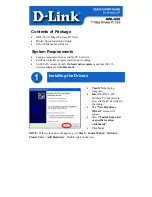
20
brand and capacity are used to establish the most efficient hard drive capacity.
In addition, if your system contains four disk drives, it is possible to use three
drives to implement a RAID 5 data array with the fourth drive kept as a spare disk.
In this configuration, the system will automatically use the spare disk to rebuild the
array in the event of a physic al disk failure. A RAID 5 configuration can survive one
disk failure without losing any system functionality. When a disk fails in RAID 5, the
storage pool will operate in the "degraded mode". There is no more data
protection at this stage, and all the data will be lost if the unit suffers a second disk
failure. A failed disk should be immediately replaced. Users can choose to install a
new disk after turning off the server or hot-swap the new disk while the server is
running. The status of the storage pool will change to "rebuilding" after installing a
new disk. Your storage pool will return to a normal status once the rebuilding
process is complete.
RAID 6
RAID 6 is ideal for critic al data protection needs. To create a RAID 6 group, a
minimum of 4 hard disks are required. The total capacity of a RAID 6 group is equal
to the size of the disk with the smallest capacity in the array times the number of
(hard disks – 2). It is recommended (though not required) to use identical
hard drives to establish the most efficient hard drive capacity. RAID 6 can survive 2
disk failures and the system can still operate properly.
RAID 10
RAID 10 is a combination of RAID 1 (mirroring) and RAID 0 (striping), without
parity. RAID 10 is a stripe across a number of disks to provide fault tolerance
and high speed data transfer. The storage capacity of a RAID 10 group is equal to
the size of the disk with the smallest capacity in the array times (the number of
hard disks in the array/2). It is recommended that only hard disk drives of the
same brand and capacity are used to create a RAID 10 group. RAID 10 is suitable
for high volume transaction applications, such as a database, that require high
performance and fault tolerance. A maximum of 2 failed disks from 2 different
pairs are allowed in RAID 10.
Triple Mirror
Triple mirror aims to solve RAID 1 data loss risk if both the primary and mirror
drive fails or if there is a non-recoverable read error. Triple mirror writes data
simultaneously to three separate HDDs so if two HDDs, the system still has access
to data with no degradation in performance even as the drives are rebuilt. The
advantage is performance; the disadvantage is far less usable capacity.
RAID-TP
RAID TP (disk striping with triple distributed parities) is similar to RAID 5 and 6. It
stripes data across drives, but calculates for three parities that are written to three
individual disks. RAID-TP uses three independent equations to calculate each
individual parity that enables reconstruction of data when three disks and /or
blocks fail at the same time. RAID-TP can add an extra level of redundancy to help
Содержание ES1642dc
Страница 33: ...33 3 Take off the top cover of the Storage Controller by uninstalling the screws 3 at the top 2 at each side...
Страница 35: ...35 3 Take off the top cover of the Storage Controller by uninstalling the screws 3 at the top 2 at each side...
Страница 40: ...40 Figure 4 Attach the screws 1 1 1 1 2 2...
Страница 44: ...44 Appendix C Product Compliance Class NAS Models FCC CE ES1640dc Class A Class A ES1642dc Class A Class A...
















































